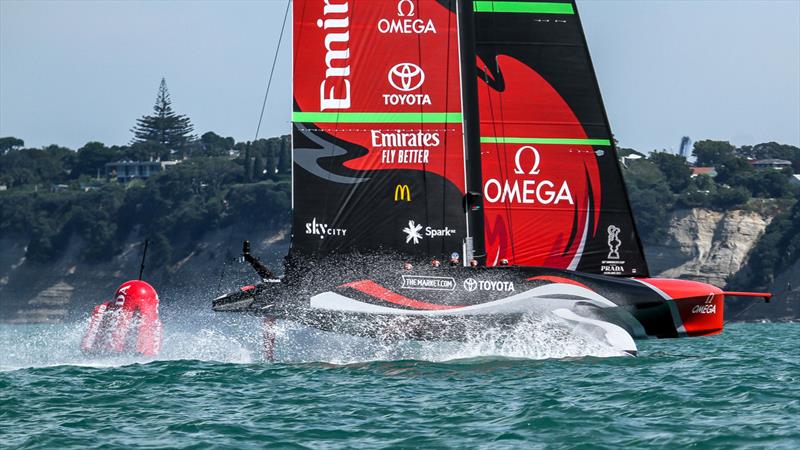
America's Cup: Emirates Team NZ use Artificial Intelligence to find the fastest way
by Richard Gladwell/Sail-World.com 4 Mar 2021 02:18 PST
4 March 2021

Emirates Team New Zealand- Training - Prada Cup Finals - Day 4 - February 21, 2021- America's Cup 36 - Course A © Richard Gladwell / Sail-World.com
A few days before racing in the 36th match for the America's Cup, the covers have been lifted on the testing and development process, using Artificial Intelligence employed by Emirates Team New Zealand, and developed in conjunction with one of worlds most prestigious consulting firms McKinsey & Company.
While the team's use of simulators has been widely discussed, and one is on display at the America's Cup Village. The team has been working with McKinsey subsidiary Quantum Black to develop
a “digital twin” of the team's AC75 that used a process of machine learning to perform many more iterations of a sailing situation than was possible using human crew, and to come up with options that were faster than the crew was currently achieving. AI Bots work particularly well when there is large volume of data. The Bot is programmed to self-learn from its own analysis.
Emirates Team New Zealand's chief designer Dan Bernasconi says he was initially skeptical that it would be possible to develop an AI Bot that would work in the America's Cup context. While it was easy enough to get a the AC75 agent to sail in a straight line, tacking and gybing was a lot more complex.
"The crucial moment came when it started beating the sailors," says Bernasconi. "It could do upwind and downwind times and tacks that were better than the sailors. That was the moment when we thought, OK this is going to be useful."
When one of the design team comes up with a new foil design, it can be run through the AI agent, which will immediately tell the designer whether it is faster or slower than the "learned" AC75 that the bot has developed based on its learnings and improvements developed from the current performance data from Te Rehutai.
The team claim that the process is ten times faster than normal testing processes - and is accurate.
"The bot does many more runs than we can do in the simulator room. To be able to see what we are doing on the boat compared to the bot, is where we see the performance gain, " explains helmsman and Olympic Gold medalist, Peter Burling.